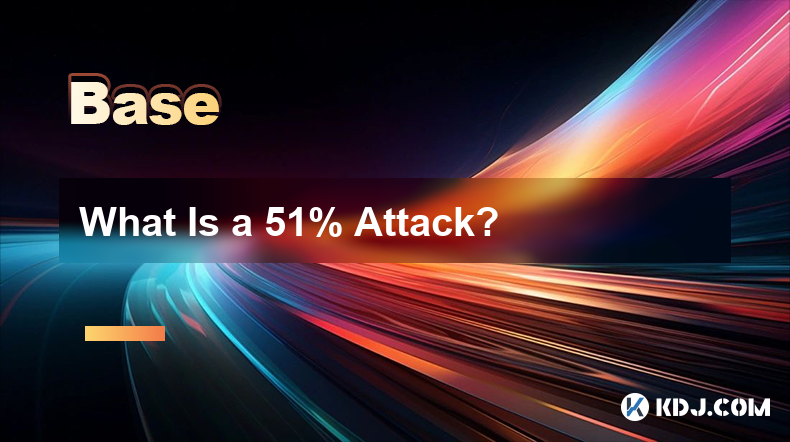-
 Bitcoin
Bitcoin $98,434.7559
2.52% -
 Ethereum
Ethereum $2,752.0415
1.60% -
 XRP
XRP $2.7106
1.82% -
 Tether USDt
Tether USDt $1.0003
0.05% -
 BNB
BNB $656.4252
0.87% -
 Solana
Solana $174.4479
3.31% -
 USDC
USDC $1.0000
0.00% -
 Dogecoin
Dogecoin $0.2543
1.11% -
 Cardano
Cardano $0.8097
6.42% -
 TRON
TRON $0.2451
0.82% -
 Chainlink
Chainlink $18.3430
2.63% -
 Sui
Sui $3.4389
8.21% -
 Stellar
Stellar $0.3469
3.93% -
 Avalanche
Avalanche $25.1353
6.40% -
 Litecoin
Litecoin $127.9770
-5.49% -
 Hedera
Hedera $0.2207
2.76% -
 Shiba Inu
Shiba Inu $0.0...01555
1.63% -
 Toncoin
Toncoin $3.6172
2.17% -
 UNUS SED LEO
UNUS SED LEO $9.7403
0.77% -
 Hyperliquid
Hyperliquid $24.5855
2.49% -
 Polkadot
Polkadot $5.0440
4.00% -
 MANTRA
MANTRA $7.5021
-1.32% -
 Bitcoin Cash
Bitcoin Cash $324.8925
1.15% -
 Ethena USDe
Ethena USDe $0.9997
0.08% -
 Uniswap
Uniswap $9.3474
-1.88% -
 Bitget Token
Bitget Token $4.5289
-6.48% -
 Dai
Dai $1.0001
0.01% -
 Monero
Monero $230.0205
-3.77% -
 NEAR Protocol
NEAR Protocol $3.4331
9.39% -
 Pepe
Pepe $0.0...09619
3.35%
What Is a 51% Attack?
Governments and large corporations possess the resources to execute 51% attacks, potentially jeopardizing the security and integrity of proof-of-work blockchains.
Dec 16, 2024 at 04:08 pm

Key Points:
- A 51% attack involves one entity controlling over half of the network's hash rate.
- Such an attack allows the malicious actor to manipulate transactions and block creation.
- Most popular proof-of-work blockchains have security measures to deter 51% attacks.
- Governments and large organizations have the resources to potentially execute 51% attacks.
- Decentralized exchanges (DEX) and stablecoins are particularly vulnerable to such attacks.
What is a 51% Attack?
A 51% attack occurs when a single entity gains control over more than half of a blockchain network's computational power (hash rate). This allows them to manipulate the blockchain's consensus mechanism, effectively granting them control over transaction processing and block creation.
How Does a 51% Attack Work?
- Control the Hash Rate: The attacker acquires a majority of the mining power dedicated to a specific blockchain.
- Manipulate Transactions: The attacker can prevent new transactions from being included in the blockchain or reverse recent transactions.
- Double-Spending: The attacker can potentially double-spend coins by broadcasting a transaction to the network and then using their majority hash rate to create a conflicting block that excludes the original transaction.
- Block Production: The attacker can decide which transactions are included in new blocks and which ones are rejected.
Vulnerability and Deterrence
Proof-of-work (PoW) blockchains like Bitcoin and Ethereum are vulnerable to 51% attacks. However, they have security measures in place to deter such attacks.
- Network Difficulty: The difficulty of mining new blocks adjusts based on the hash rate, making it more expensive to accumulate sufficient power for an attack.
- Block Rewards: Networks offer rewards to miners who successfully mine new blocks, incentivizing participants to maintain the network's security.
- Decentralization: Widely distributed mining pools reduce the likelihood of any single entity acquiring 51% of the hash rate.
Consequences of a 51% Attack
- Loss of Trust: Users may lose confidence in a blockchain that has experienced a 51% attack.
- Financial Loss: Victims of double-spending can suffer severe financial losses.
- Legal and Regulatory Action: Governments may consider taking action against entities responsible for 51% attacks.
Who Could Execute a 51% Attack?
- Governments: Governments with access to advanced computing resources could potentially execute such attacks.
- Large Corporations: Mining pools and other organizations with significant financial resources could also attempt 51% attacks.
DEX and Stablecoin Vulnerability
Decentralized exchanges (DEXs) and stablecoins that rely on oracles or PoS mechanisms may be particularly vulnerable to 51% attacks. An attacker could manipulate prices or halt trading activities on DEXs by controlling the network's nodes or validators.
FAQs
Is it possible to recover from a 51% attack?
Yes, it is possible to recover from a 51% attack by implementing protocol upgrades or reorganizing the blockchain. However, it requires a significant effort from network participants and developers.
Can proof-of-stake consensus mechanisms prevent 51% attacks?
Proof-of-stake (PoS) mechanisms generally offer greater resistance to 51% attacks compared to PoW. However, PoS networks may still be vulnerable to attacks if the majority of tokens are concentrated in the hands of a few validators.
How can I protect myself from 51% attacks?
- Diversify your cryptocurrency portfolio across different blockchains to reduce risk.
- Avoid investing heavily in DEXs or stablecoins that may be vulnerable to 51% attacks.
- Stay informed about potential attacks and any network upgrades or defensive measures.
Disclaimer:info@kdj.com
The information provided is not trading advice. kdj.com does not assume any responsibility for any investments made based on the information provided in this article. Cryptocurrencies are highly volatile and it is highly recommended that you invest with caution after thorough research!
If you believe that the content used on this website infringes your copyright, please contact us immediately (info@kdj.com) and we will delete it promptly.
- DTX Exchange Surges 800% From $0.02 Start to $0.18 as Cardano's ADA Loses 7.43% in 24h Struggle
- 2025-02-21 03:35:22
- State Legislatures Field Digital Currency Bills After Trump Executive Order
- 2025-02-21 03:35:22
- 4 Ways to Diversify Your Digital Asset Portfolio
- 2025-02-21 03:35:22
- Is XRP the Next Crypto Titan? Discover Opportunities and Challenges Now!
- 2025-02-21 03:35:22
- Can Dogecoin Hit $1 When Bitcoin Reaches a $10 Trillion Market Cap?
- 2025-02-21 03:35:22
- Rollblock (RBLK) Presale Raises Over $10.5 Million, Could It Outperform Dogecoin (DOGE) in 2025?
- 2025-02-21 03:35:22
Related knowledge

What is Off-Chain Governance Scalability?
Feb 15,2025 at 06:42pm
Key PointsOff-chain governance is a process by which decisions are made and implemented outside of the blockchain network.Scalability refers to the ability of a system to handle an increasing number of transactions without compromising performance.Off-chain governance scalability offers a solution to the scaling challenges faced by blockchain networks b...

What is On-Chain Governance Scalability?
Feb 15,2025 at 07:54pm
Key Points:Definition and Importance of On-Chain Governance ScalabilityBenefits of Scalable On-Chain GovernanceChallenges and Trade-offs in Achieving ScalabilityCurrent Solutions to Improve On-Chain Governance ScalabilityFuture Developments and InnovationsWhat is On-Chain Governance Scalability?On-chain governance refers to the process of making decisio...

What is Off-Chain Governance Security?
Feb 15,2025 at 02:18pm
Key Points:Off-chain governance leverages external mechanisms to facilitate decision-making and consensus among blockchain participants.Security measures mitigate risks associated with off-chain governance, such as centralization, collusion, and malicious manipulation.Multi-signature wallets, decentralized autonomous organizations (DAOs), and dispute re...

What is On-Chain Governance Security?
Feb 16,2025 at 04:07pm
Key PointsOn-chain governance security refers to the mechanisms and processes in place on a blockchain to ensure the integrity and security of governance decisions.Primary methods of on-chain governance include voting, staking, and delegation.Key benefits of on-chain governance include transparency, immutability, and decentralization.Challenges associat...

What is Off-Chain Governance Transparency?
Feb 16,2025 at 09:24pm
Key Points:Off-chain governance transparency refers to the availability and accessibility of information about decision-making processes and outcomes outside of a blockchain's main network.Off-chain governance systems can be employed for various purposes, such as community engagement, proposal evaluation, and voting on protocol upgrades.Establishing cle...

What is On-Chain Governance Transparency?
Feb 18,2025 at 06:36am
Key Points:On-chain governance transparency refers to the ability of stakeholders to access and interact with the blockchain data that underpins a protocol's governance system.Transparent governance ensures accountability, reduces risks of centralization, and fosters community engagement.It enables stakeholders to verify voting records, track proposals,...

What is Off-Chain Governance Scalability?
Feb 15,2025 at 06:42pm
Key PointsOff-chain governance is a process by which decisions are made and implemented outside of the blockchain network.Scalability refers to the ability of a system to handle an increasing number of transactions without compromising performance.Off-chain governance scalability offers a solution to the scaling challenges faced by blockchain networks b...

What is On-Chain Governance Scalability?
Feb 15,2025 at 07:54pm
Key Points:Definition and Importance of On-Chain Governance ScalabilityBenefits of Scalable On-Chain GovernanceChallenges and Trade-offs in Achieving ScalabilityCurrent Solutions to Improve On-Chain Governance ScalabilityFuture Developments and InnovationsWhat is On-Chain Governance Scalability?On-chain governance refers to the process of making decisio...

What is Off-Chain Governance Security?
Feb 15,2025 at 02:18pm
Key Points:Off-chain governance leverages external mechanisms to facilitate decision-making and consensus among blockchain participants.Security measures mitigate risks associated with off-chain governance, such as centralization, collusion, and malicious manipulation.Multi-signature wallets, decentralized autonomous organizations (DAOs), and dispute re...

What is On-Chain Governance Security?
Feb 16,2025 at 04:07pm
Key PointsOn-chain governance security refers to the mechanisms and processes in place on a blockchain to ensure the integrity and security of governance decisions.Primary methods of on-chain governance include voting, staking, and delegation.Key benefits of on-chain governance include transparency, immutability, and decentralization.Challenges associat...

What is Off-Chain Governance Transparency?
Feb 16,2025 at 09:24pm
Key Points:Off-chain governance transparency refers to the availability and accessibility of information about decision-making processes and outcomes outside of a blockchain's main network.Off-chain governance systems can be employed for various purposes, such as community engagement, proposal evaluation, and voting on protocol upgrades.Establishing cle...

What is On-Chain Governance Transparency?
Feb 18,2025 at 06:36am
Key Points:On-chain governance transparency refers to the ability of stakeholders to access and interact with the blockchain data that underpins a protocol's governance system.Transparent governance ensures accountability, reduces risks of centralization, and fosters community engagement.It enables stakeholders to verify voting records, track proposals,...
See all articles

















































































